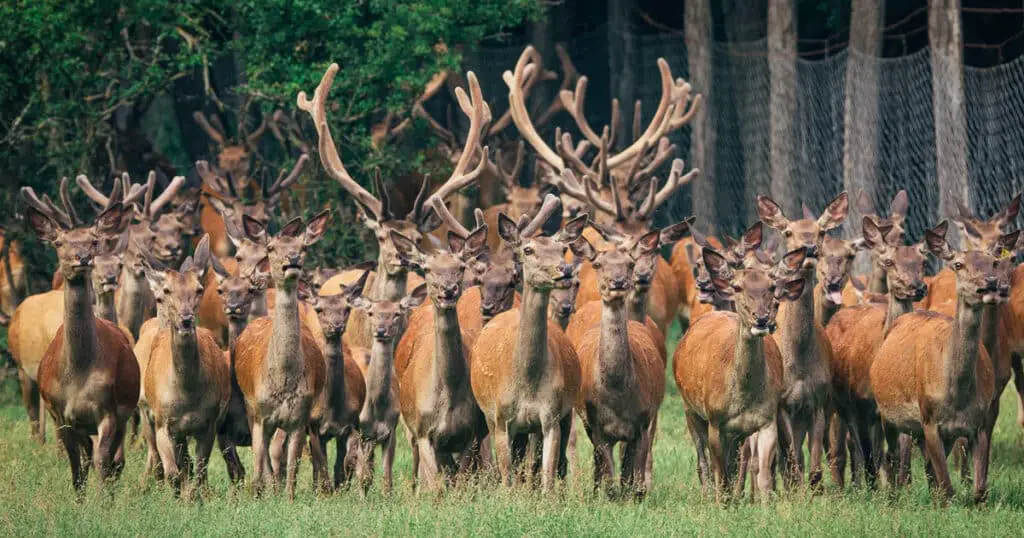Deer aren’t usually the animals that come to mind when we think about farms and farming. Yet agriculture in the United States and around the world extends beyond the usual cows, pigs, chickens, and sheep. Deer farming has become more prevalent, and that’s what we’re going to learn about here.
If you have ever tasted venison (deer meat), you know how lean and healthy it is. Its growing popularity is behind deer farming. Let’s explore:
- Why does deer farming exist?
- Different types of deer farms
- What kinds of deer are raised on deer farms?
- Deer farm management
- Deer herds vs traditional livestock
Why Does the Deer Farming Industry Exist?
Table of Contents
ToggleThere are plenty of reasons why deer farms are becoming more common in the United States and other locations around the world.
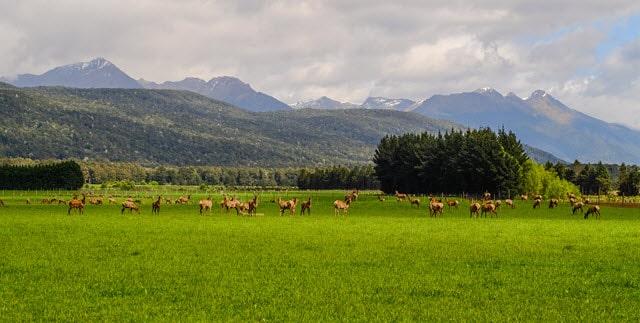
The most significant factor is the growing demand for grass-fed meats and concerns about the environment. A deer farm is significantly kinder to the environment than cattle operations.
Deer meat, also known as venison, is remarkably lean. This combined with its high protein levels is making this meat more mainstream.
Some states don’t allow farms to raise deer species native to the region. In these circumstances, farmers raise non-native deer species, such as sika deer and fallow deer.
Occasionally, deer farms will use the hides from their deer (after the meat is harvested) to make leather that is sold on the market.
Different Types of Deer Farm
Deer farms range in size. There are both smaller and larger operations in the United States and in other parts of the world.
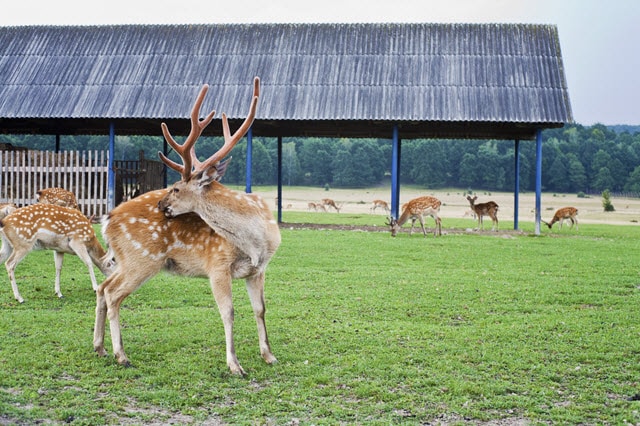
The main differentiating factor in deer farms is what kind of deer they have. Deer farming is referred to as the cervid livestock industry.
As a deer farmer, you’re responsible for ensuring that each animal has enough space. There should be a minimum of 1,000 square feet for each full-grown animal.
Larger types of deer, such as elk, may require significantly more than that.
What Kinds of Deer are Raised on Deer Farms?
The deer found on farms in the cervid livestock industry include:
Of course, the type of deer farmed will vary based on location around the world. Farming native deer species tends to be productive because those deer are acclimated to their climate. For example, in 2021 an Axis deer farm in Texas experienced major losses during an unusual cold snap.
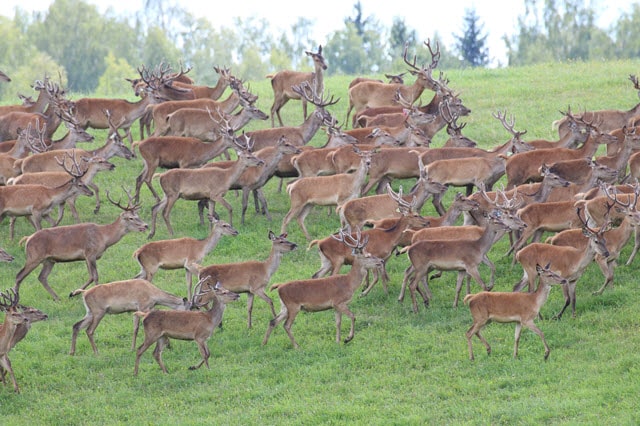
The most common deer on North American deer farms are:
- Whitetail deer
- Fallow deer
- Elk
Let’s take a closer look at the most popular choice: whitetail deer.
Whitetail Deer
There are at least 4,000 whitetail deer agricultural operations in the United States. Their total revenue is impressive, at $44 million.
The states where whitetail deer farms are most common are:
- Minnesota
- Michigan
- Ohio
- Pennsylvania
- Texas
The last 20 years have been a period of tremendous growth in the number of whitetail deer farms. Whitetail deer farms enjoy flexibility when it comes to land quality, and that is one reason why these farms have become more popular.
In other words, a farmer with land inadequate for other purposes may find it perfectly adequate for maintaining whitetail deer.
Whitetail deer farmers provide their deer with access to legumes (such as alfalfa and clover), grass, grass hay, and leafy food such as natural browse.
Farmers will usually supplement this food selection with a pellet deer food (grain-based) or pure grain. They will usually also supplement for minerals and vitamins.
The exact diet and supplementation will vary based on each animal’s age.
Deer Farm Management
Are you thinking about having a deer farm? Find out the licensing requirements and inspection schedule your state requires for a cervid farm operation.
Animal Health
As a deer farmer, you must have detailed knowledge and expertise in deer health and what these animals need for their well-being. One tricky aspect of deer farming is that most agricultural veterinarians lack experience in deer health and medicine.
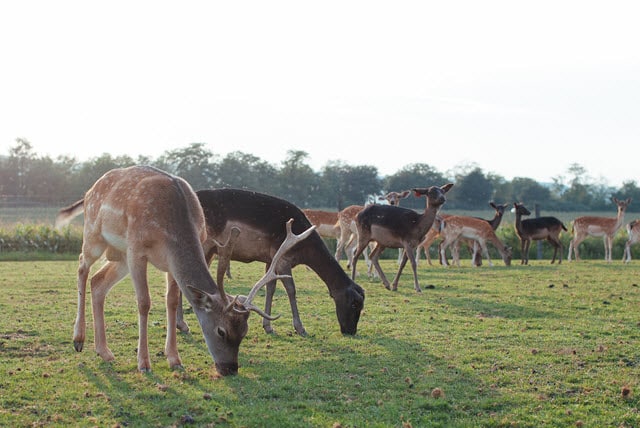
That’s why you should ensure there are veterinarians in your area that know how to treat deer before you establish a deer farm.
If you have a deer farm and cannot find a vet skilled at treating deer, ask them to contact the North American Deer Farmers Association. This organization will give your vet informational resources so they can take provide fundamental care for your herd.
Deer are susceptible to certain diseases. Examples include:
- Chronic Wasting Disease (CWD)
- Brucellosis
- Tuberculosis
Chronic Wasting Disease
Chronic Wasting Disease (also known as Zombie Deer Disease) is an extremely serious and highly contagious disease that will spread quickly through a herd.
CWD is a prion disease that attacks the deer’s nervous system and brain. Make sure you understand this disease and what its symptoms are before getting into deer farming.
Brucellosis
Brucellosis is a contagious bacterial disease that deer may contract. A variety of bacteria in the Brucella bacterium species causes Brucellosis.
Ruminants (such as deer) in general may get brucellosis. Sheep, cattle, goats, and swine are susceptible.
Be aware that humans can catch this disease from contact with infected animals. This is something to stay aware of if you have a deer farm.
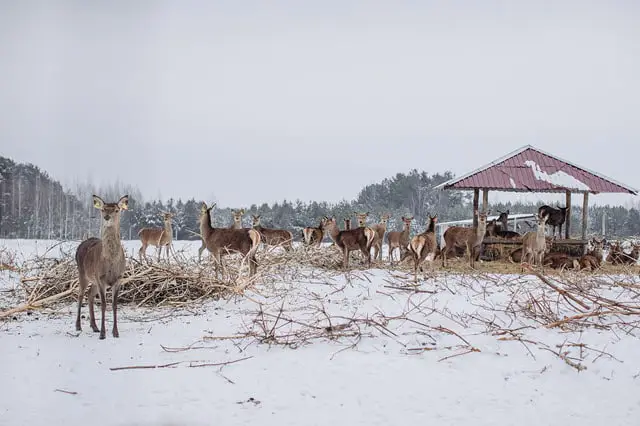
Pasture and Food
As browsing animals, deer get most of their food from pasture. Make sure your pasture maintains excellent soil quality.
A deer farm’s pasture should also include small trees and brush.
Deer farms tend to do best with rotational grazing. This kind of system is best for maintaining soil quality and the nutritional content of the food it produces.
Also, keep the season in mind when planning your deer diet.
Be prepared to supplement your deer’s diet with a healthy grain in the winter and other times of the year. Hay will form the bulk of their diet in cold and snowy weather, as pasture won’t be available.
Water
Your deer must have constant access to fresh, clean water. Provide water tanks for your herd.
You should position the water tanks immediately beside the fence. This means you can access it at all times.
This becomes especially important during the breeding season, as bucks can be aggressive during that time of year.
Fencing
Of course, you will have fencing to keep in your deer. Deer farmers must install fencing at least eight feet tall to stop deer from escaping.
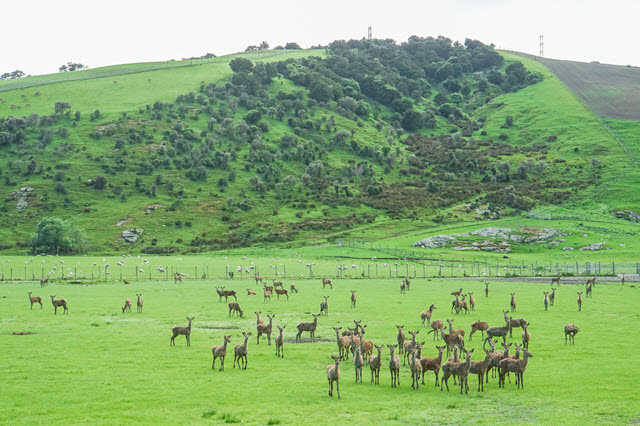
Deer can jump extremely high, and a shorter fence probably wouldn’t contain them.
Heavy gauge, woven wire is recommended for the fencing material. The minimum gauge is 12.5, and 14.5 is the maximum you need.
Most deer farmers use wooden posts with their fencing. Every state has its own regulations about the height of fencing on deer farm enclosures.
Set up animal handling areas. We sometimes call these “squeeze” pens or shoots.
You’ll need those when your deer need veterinary care or other kinds of direct attention. Examples include vaccinations or other injections administered by a vet.
Shelter
Your deer must have constant access to shelter. They need somewhere to go and be safe during difficult weather.
This shelter can be something as basic as a structure with three sides that you can locate on the pasture.
Many deer farmers help foster calmness and comfort in their animals by placing a shade cloth on the outer part of the fencing.
This stops the deer from seeing outside their enclosure, so they cannot become worried and fearful about outside threats.
Deer Herds vs Traditional Livestock
Deer farming is distinctly different from other kinds of agriculture.
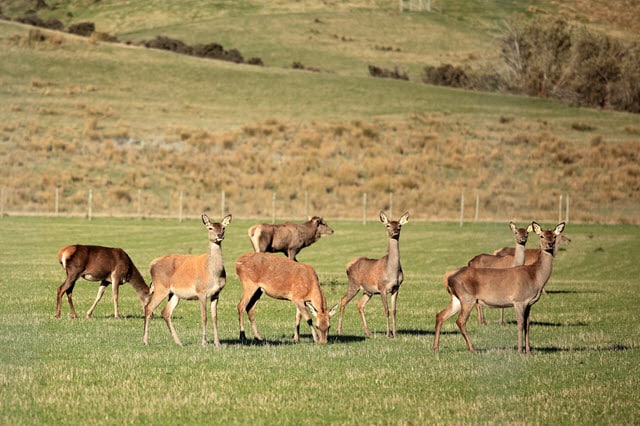
Here’s a list of the differences below:
- Deer feeding is easier and pasture-focused
- Deer don’t eat as much in the winter
- Farmers don’t usually go inside deer enclosures
- Deer farming causes less environmental damage
- It’s usually more profitable
Let’s explore some of the differences below.
Deer Don’t Eat as Much in the Winter
When deer live in the wild, they must survive times of the year with extremely scarce food resources. The most obvious example is the winter months.
Cervids have evolved the ability to live on about half the amount of food in the winter as they do at other times of the year.
Farmers Don’t Usually Go Inside Deer Enclosures
This is one of the ways in which deer farming is distinctly different from most other kinds of livestock rearing. It is rare for a farmer to touch one of his or her deer.
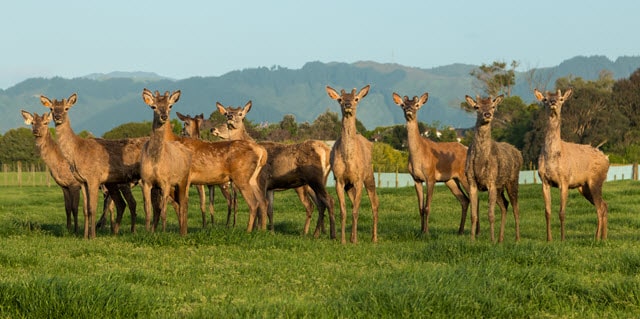
Deer farmers avoid going into the enclosures where their deer live and eat. There are certain circumstances where contact may be necessary, but this must be properly controlled.
Remember, deer may be dangerous, especially during the breeding season (the rut).
Less Environmental Damage
Deer farms cause less damage to pastures. Cervids also consume less fodder than cattle.
Deer don’t need to eat as much food because their bodies are more efficient at using pasture to generate protein.
Easy Pasture Feeding
Unlike some other agricultural livestock, it’s relatively easy to feed deer as long as you have a healthy and abundant pasture.
The pasture may be a natural one, or it may be seeded. Deer farmers tend to give their animals a varied diet by including different kinds of grasses as well as legumes on the pasture.
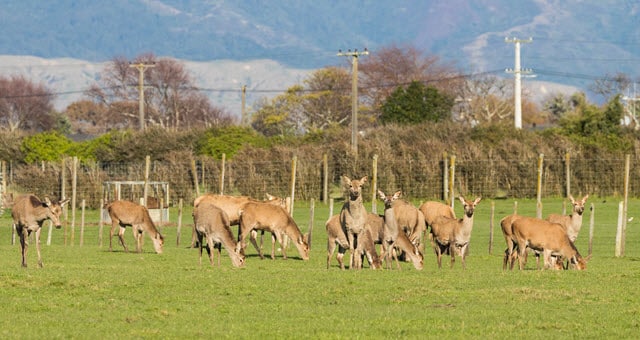
There is one complication of pasture feeding, however, that you should keep in mind. The pasture will eventually get depleted, and that is why farmers tend to use a rotational system.
In other words, they rotate their deer from one pasture to other pastures, so the ground has a chance to recover.
Be careful never to overgraze one pasture. If you do, the grass it grows may be depleted in nutrients and your herd’s health will suffer.
Deer don’t need as much food overall as other farm animals. In fact, you could feed three female elk (a deer species that is sometimes found on deer farms) with an amount of food equivalent to what a single beef cow would need.
Deer Farming and Profit
Deer farming tends to be more profitable than traditional agriculture with cows and other kinds of livestock. One reason is that deer eat less food than cattle.
As a result, deer will cause less pasture damage than cattle. Deer also have a long reproductive life, especially in the captivity of a deer farm.
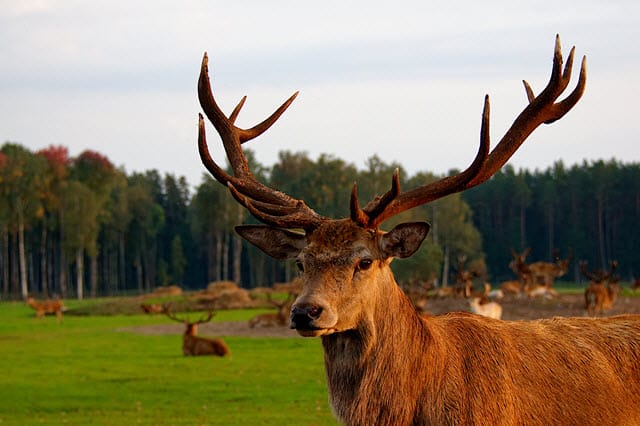
Additionally, deer are often capable of reproducing for as long as 20 years when they’re kept correctly.
Many deer farms focus on selling to restaurants and private enthusiasts who love the taste of venison. With the latter, some deer farms sell to clients directly on their farms.
It’s still quite rare to find venison sold in supermarkets.
Final Thoughts On Deer Farming
Deer farming is becoming more prevalent as an agricultural business in the United States and other countries around the world. There is increasing demand for venison as a lean and nutritious meat.
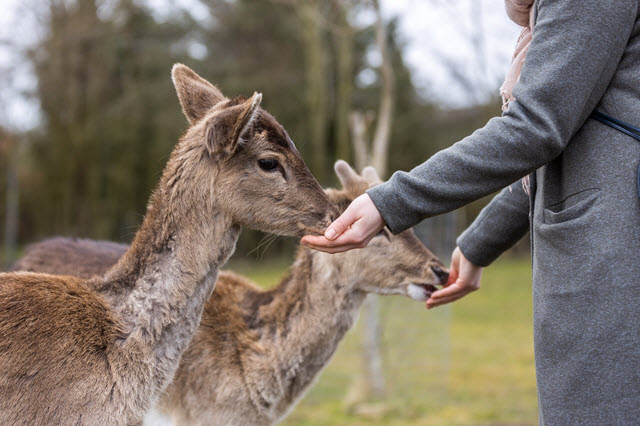
If you’ve considered starting a deer farming operation, the information we’ve provided here is your essential guide. Now you know the fundamentals and advantages of deer farming.

